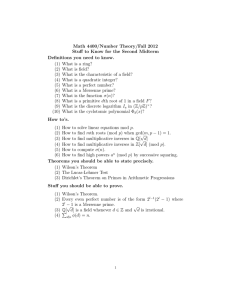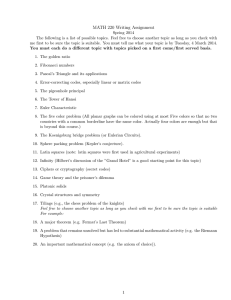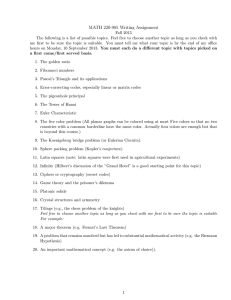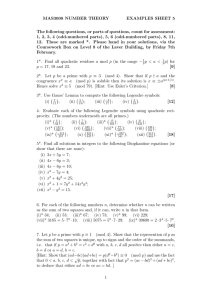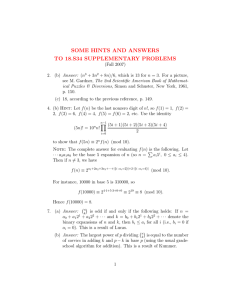Math 4400/Number Theory/Fall 2012 List of Projects Choose One!
advertisement
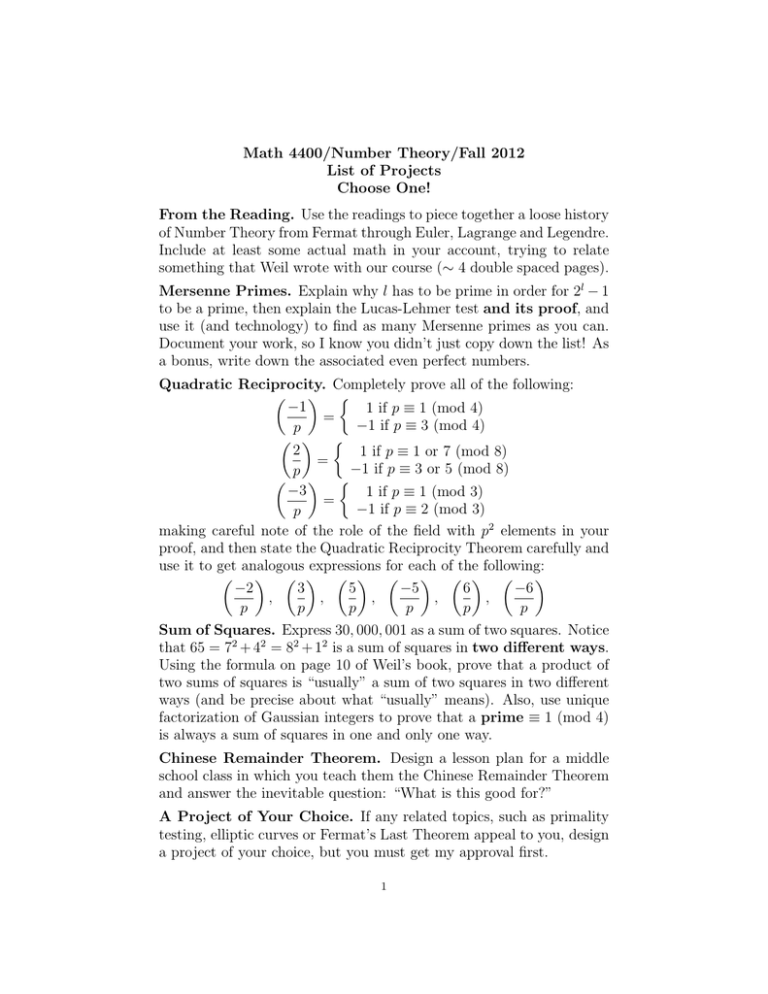
Math 4400/Number Theory/Fall 2012 List of Projects Choose One! From the Reading. Use the readings to piece together a loose history of Number Theory from Fermat through Euler, Lagrange and Legendre. Include at least some actual math in your account, trying to relate something that Weil wrote with our course (∼ 4 double spaced pages). Mersenne Primes. Explain why l has to be prime in order for 2l − 1 to be a prime, then explain the Lucas-Lehmer test and its proof, and use it (and technology) to find as many Mersenne primes as you can. Document your work, so I know you didn’t just copy down the list! As a bonus, write down the associated even perfect numbers. Quadratic Reciprocity. Completely prove all of the following: −1 1 if p ≡ 1 (mod 4) = −1 if p ≡ 3 (mod 4) p 2 1 if p ≡ 1 or 7 (mod 8) = −1 if p ≡ 3 or 5 (mod 8) p −3 1 if p ≡ 1 (mod 3) = −1 if p ≡ 2 (mod 3) p making careful note of the role of the field with p2 elements in your proof, and then state the Quadratic Reciprocity Theorem carefully and use it to get analogous expressions for each of the following: −2 3 5 −5 6 −6 , , , , , p p p p p p Sum of Squares. Express 30, 000, 001 as a sum of two squares. Notice that 65 = 72 + 42 = 82 + 12 is a sum of squares in two different ways. Using the formula on page 10 of Weil’s book, prove that a product of two sums of squares is “usually” a sum of two squares in two different ways (and be precise about what “usually” means). Also, use unique factorization of Gaussian integers to prove that a prime ≡ 1 (mod 4) is always a sum of squares in one and only one way. Chinese Remainder Theorem. Design a lesson plan for a middle school class in which you teach them the Chinese Remainder Theorem and answer the inevitable question: “What is this good for?” A Project of Your Choice. If any related topics, such as primality testing, elliptic curves or Fermat’s Last Theorem appeal to you, design a project of your choice, but you must get my approval first. 1
